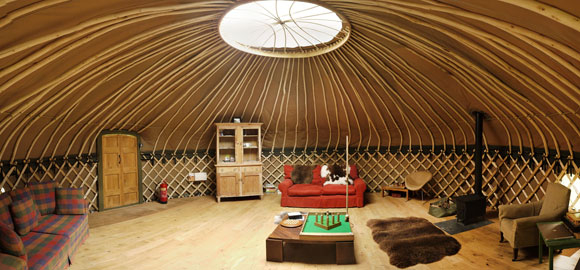Some societies in our current world have strong beliefs about ghosts and spirits. This affects their architecture, e.g.
6 Bizarre Ways Architecture Is Designed to Ward Off Ghosts
By Christina H December 14, 2010
The methods vary from the colour of paint you use to the shape of doorways.
Question
In a world where spirits were known to hide in corners and come out at night to cause trouble, how would this affect architecture? What about cupboards, beds, refrigerators, carpets, etc?
In particular I'm trying to work out how large buildings would look both from the inside and out. Can anyone suggest good ways to conserve materials - rectangular rooms are after all quite efficient from a packing point of view.
Clarification
You can consider a spirit to be a sphere of diameter from 1cm - 100cm. They adhere to a corner at two or more points on their surface by flattening themselves slightly where they touch. They are unable to deform themselves very much however and always retain a roughly spherical shape. They can however extend pseudopodia at night to form limbs. These limbs cannot be less than 1cm across or longer than 1 metre. A pseudopod forms part of the volume of the ghost so the sphere diminishes in size accordingly. They only have pseudopods when they are moving around at night causing mischief.
 Note: The spirits are the greyed-in circles. The walls are the black lines. If the spirits can touch in two places they can hold on. A green tick means that the spirit can hold on to the surfaces. A red cross means that the spirit cannot hold on.
Note: The spirits are the greyed-in circles. The walls are the black lines. If the spirits can touch in two places they can hold on. A green tick means that the spirit can hold on to the surfaces. A red cross means that the spirit cannot hold on.
Movement
At night the ghosts leave the corners and move around the building. Their maximum speed is about walking speed of a human but like most ghosts they can move through walls. They mainly operate like poltergeists. What they can move depends on their size. A 1cm ghost could knock an empty teacup over. A 5cm ghost could hide your TV remote or your keys. A 30cm ghost can open doors, pull your bedding off or pull drawers out and spill the contents. A 1m ghost is the most dangerous. It can knock large furniture over, shake your bed, pull you out of bed while you are asleep - even levitate you.
All ghosts can do a sort of Vulcan mind-meld while you are asleep. The small to medium ones can give you nightmares. The larger ones can employ phenomena such as temporarily possessing you as in the Exorcist movie.
Interaction with solid objects
Ghosts, like poltergeists, can choose to interact with solid matter. When sleeping, they can hold onto surfaces. During the night they move around and grip things with their pseudopods. They can drift through solid walls but they cannot simultaneously interact with solids and drift through them. Therefore they have to slingshot themselves through solid objects. The reason that they must roost somewhere during the day is that they are not affected by gravity. They would simply drift off into space if they didn't hold onto something.
Preference
Ghosts like to congregate near people. They prefer an inhabited house to an uninhabited one. However if they cannot find somewhere to hide near people, they have to go further afield in order to find a daytime sleeping place.





